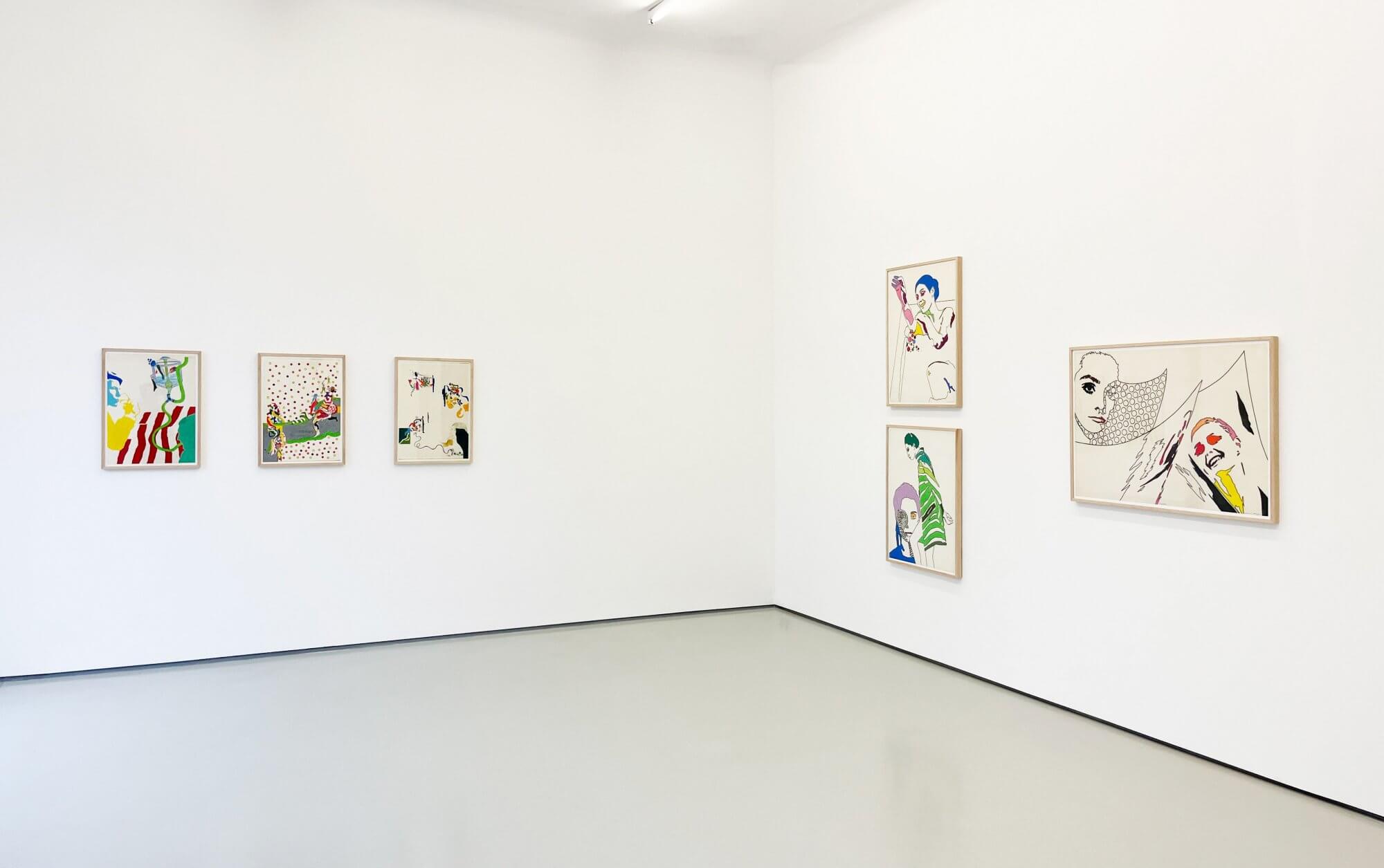Opening: Mar 3, 2023 | 6 – 9 pm
Location: LEVY Berlin, Alt-Moabit 110, 10559 Berlin
»From his artistic beginnings, painter and graphic artist Werner Berges has always been a “soloist”, an outlier in the arts. The artist, born in Cloppenburg in Lower Saxony in 1941, had studied with Johannes Schreiter at the Staatliche Kunstschule in Bremen and, from 1963, with Alexander Camaro at the Hochschule der Künste in West Berlin. It was there, in 1964, that students opened a “self-help” gallery in Großgörschenstrasse–the now well-known Galerie und Künstler-Gruppe Großgörschen 35 (Gallery and Artists Group Großgörschen 35). The project included Hans-Jürgen Diehl, Petrick Sorge, Hermann Albert, Ulrich Baehr, Leiv W. Donnan, Bernd Koberling, Reinhard Lange, Markus Lüpertz, and, starting in 1966, Werner Berges. Großgörschen 35 is notable in two respects: first, we know of no other group of German artists from the 1960s that sparked so much interest, especially among young artists from other art schools; second, all the members of Großgörschen 35, in their figurative, time-related, and critical confrontation with reality, run counter against the mainstream current, which was marked by abstraction and informal painting.
During the same period, in 1966, when Berges joined the group of artists, for the first time, he presented works, mainly in print, which drew their pictorial repertoire from the contemporary everyday world of commodities. Transforming the attitudes, the gestures, the stylizations from the elegant fashion world as the latest style-defining subject in art was intended to be disconcerting. But Berges had an unmistakable courage and consistency, which to this day mark his oeuvre as unique. They weren’t the provocative pin-ups of American Pop Art, which had been frowned upon in the preceding years in the American visual culture. Berges’ pictures were closer to the elegance of Allen Jones’ figurations of women. Berges was concerned with taking the beautiful outer appearance of our perceivable reality into the artistic medium, in order to evaluate hypocritical beauty against pictorial reinventions.
The formal reduction of the represented subject, that Berges‘ typifications of women undoubtedly pursue, was, however, a symbol of the avant-garde since the beginning of modern art. As art theorist Rudolf Arnheim already noted in 1965, when Berges had started with his pictorial series, „the form often positions itself between the viewer and the subject of the painting, instead of being absorbed in any content“. This „planned artlessness”, as somebody called it, a supposed „unartistic“ representation, attempts to think of art and life as common, betraying the artificiality of life, but not the autonomy of art.«
(Excerpt from a text by Ludwig Zerull for the Nord /LB catalogue of Werner Berges, Hanover 2005)
Eröffnung: 3. Mär. 2023 | 18 – 21 Uhr
Ort: LEVY Berlin, Alt-Moabit 110, 10559 Berlin
»Der Maler und Graphiker Werner Berges war von seinen künstlerischen Anfängen an stets schon ein Solist, ein Außenseiter in der Kunst. Der 1941 im niedersächsischen Cloppenburg geborene Maler hatte bei Johannes Schreiter an der Staatlichen Kunstschule in Bremen studiert und seit 1963 dann bei Alexander Camaro an der Hochschule der Künste in West-Berlin. Dort hatten Studenten ab 1964 eine Selbsthilfegalerie in der Großgörschenstraße aufgemacht, die berühmt gewordene Galerie und Künstler-Gruppe Großgörschen 35. Es gehörten dazu u. a. Hans-Jürgen Diehl, Petrick Sorge, Hermann Albert, Ulrich Baehr, Leiv W. Donnan, Bernd Koberling, Reinhard Lange, Markus Lüpertz – und eben auch seit 1966 Werner Berges. Großgörschen ist in zweierlei Hinsicht bemerkenswert. Denn es ist uns erstens aus den 60er Jahren des vorigen Jahrhunderts keine andere deutsche Künstlergruppe bekannt, die damals so großes Interesse, insbesondere bei den jungen Künstlern anderer Kunsthochschulen erregte. Und zweitens schwammen alle Mitglieder von Großgörschen 35 mit ihren gegenständlichen, zeitbezogenen und kritischen Auseinandersetzungen mit der Realität gegen den von Abstraktion und informeller Malerei bestimmten Mainstream.
Genau zu dieser Zeit 1966, als Werner Berges zu dieser Künstlergruppe gekommen war, präsentierte er erstmals Bilder, vor allem druckgraphische Werke, die ihr Bildrepertoire aus der zeitgleichen alltäglichen Warenwelt bezogen. Es musste und sollte befremden, die Haltungen, Gesten, Stilisierungen aus der eleganten Modewelt in der Kunst zum stilbildenden Sujet zu machen. Berges hatte diesen Mut und diese Konsequenz, die bis heute seine künstlerische Arbeit so einmalig, so unverwechselbar zeigt. Es waren keineswegs die in der amerikanischen Pop Art der vorausgegangenen Jahre provokativ eingesetzten, in der amerikanischen Bildwelt verpönten Pin Ups, die zum Vorbild dienten. Berges` Bilder hatten am ehesten noch eine Eleganz, wie sie der Engländer Allen Jones in seiner Frauenwelt fand. Es ging Berges darum, den schönen Schein der scheinbaren Realität ins künstlerische Medium hineinzunehmen, um damit auch falsche Schönheit gegen bildnerische Neuerfindungen zu werten.
Die Reduzierung des dargestellten Objekts, die Berges in seinen Frauentypisierungen zweifellos vornimmt, ist allerdings schon seit Beginn der Moderne Ausweis von Avantgarde gewesen. Wie der Kunsttheoretiker Rudolf Arnheim schon zu der Zeit, als Berges mit seinen Bildserien begonnen hatte, 1965 feststellte, tritt heute „die Form oft zwischen den Betrachter und den Gegenstand des Bildes, anstatt im Inhalt aufzugehen“. Diese, wie sie einer genannt hat, „geplante Kunstlosigkeit“, eine vermeintlich „unkünstlerische“ Darstellung, versucht, Kunst und Leben zusammen zu denken, indem sie die Künstlichkeit des Lebens, nicht aber die Eigenständigkeit der Kunst verrät.«
(Auszug aus dem Text von Ludwig Zerull für den Werner Berges-Katalog der Nord /LB, Hannover 2005)

